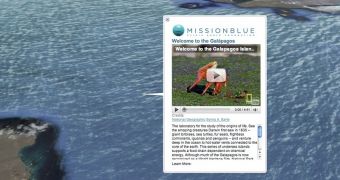Google's mapping efforts are nothing but ambitious. It is working diligently to make Street View imagery for as many of the Earth's cities as possible. It is also aiming to have them recreated in 3D in Google Earth. The satellite imagery of even the most remote places is becoming more detailed. Yet, most of its efforts focus on just 30 percent of the Earth's surface. The other 70 percent, the world's oceans, haven't received as much attention so far, but things are changing, according to Google.
The company is announcing that the Ocean layer will now be shown by default in Google Earth, meaning that users will get to see all the interesting places and photos that Google and other organizations have been adding. The Ocean layer, enabling them to dive deep and explore the ocean floor, has only been available for a year or so in Earth. During that time, interesting locations have been added and various expeditions have been tracked in Google Earth.
"We worked with more than 100 partners to begin to fill in the 'blue' part of the planet, adding hundreds of placemarks in more than 20 ocean layers. Since then, we’ve added hundreds of new posts to the Ocean layer with the help of Sylvia Earle’s Mission Blue Foundation and dozens of committed individuals around the world," John Hanke, vice president of product management at Google Geo, wrote.
"Today, the layer will become part of the default set of annotations seen by all Earth users. Although a humble step given the dearth of information available about these vast expanses of geography, we are happy to take one more step to make the oceans a first-class part of Google Earth," he announced.
There is another reason why Google wanted to add more ocean data, it hopes that it will get people involved in protecting it. The Mission Blue Foundation, which has contributed data and information to the ocean layer in Google Earth, is looking to create a series of protected marine areas, dubbed "Hope Spots," and eight of the 18 proposed spots are detailed by Google in a narrated tour, now available in the recently launched Ocean Showcase, which features gorgeous underwater locations.

 14 DAY TRIAL //
14 DAY TRIAL //